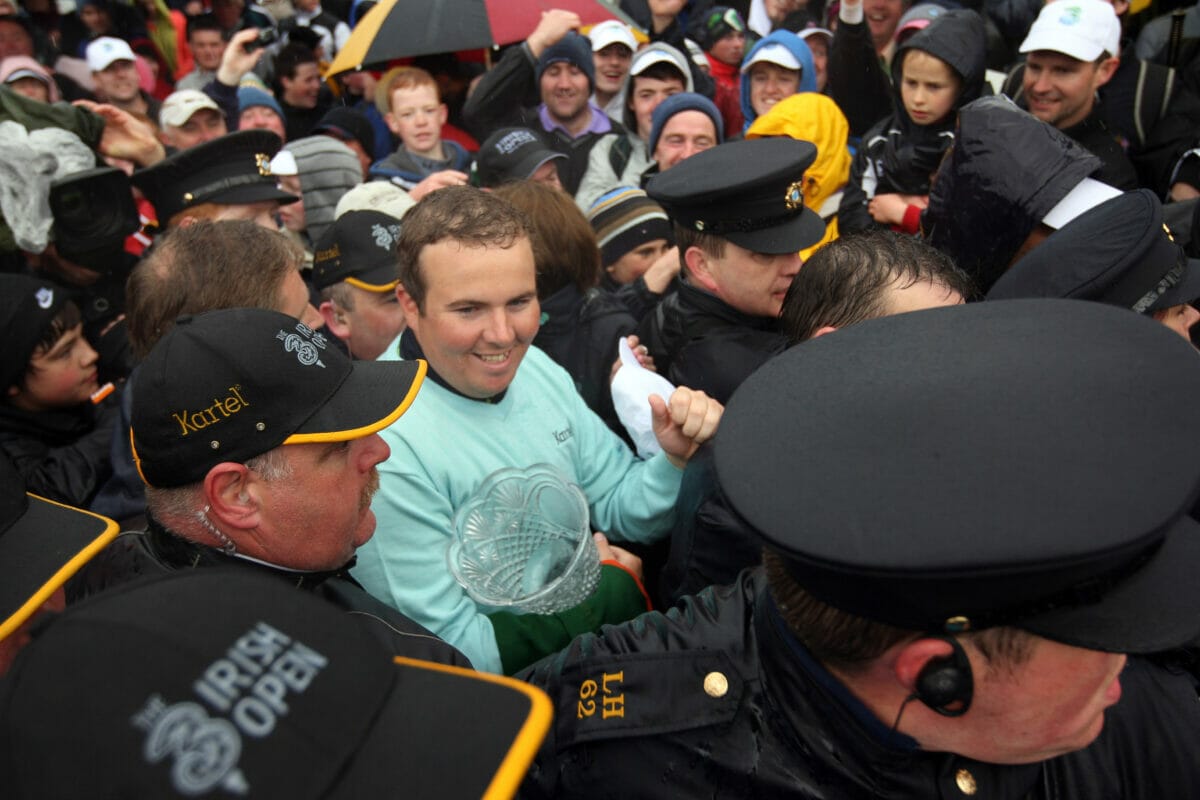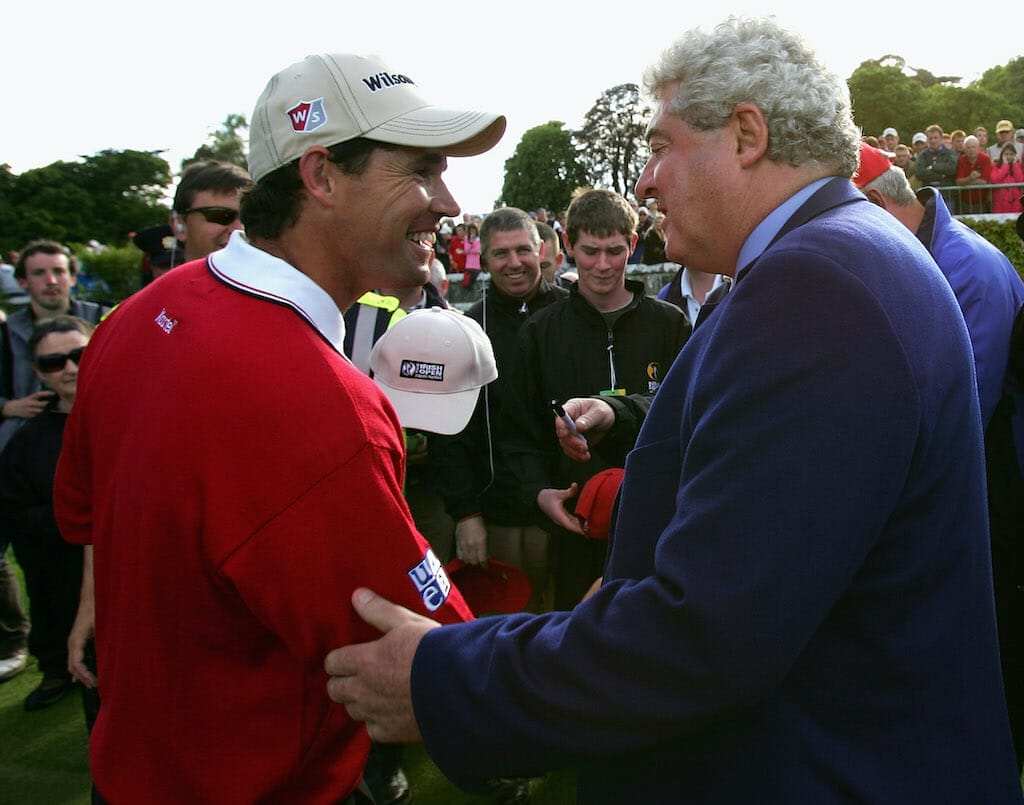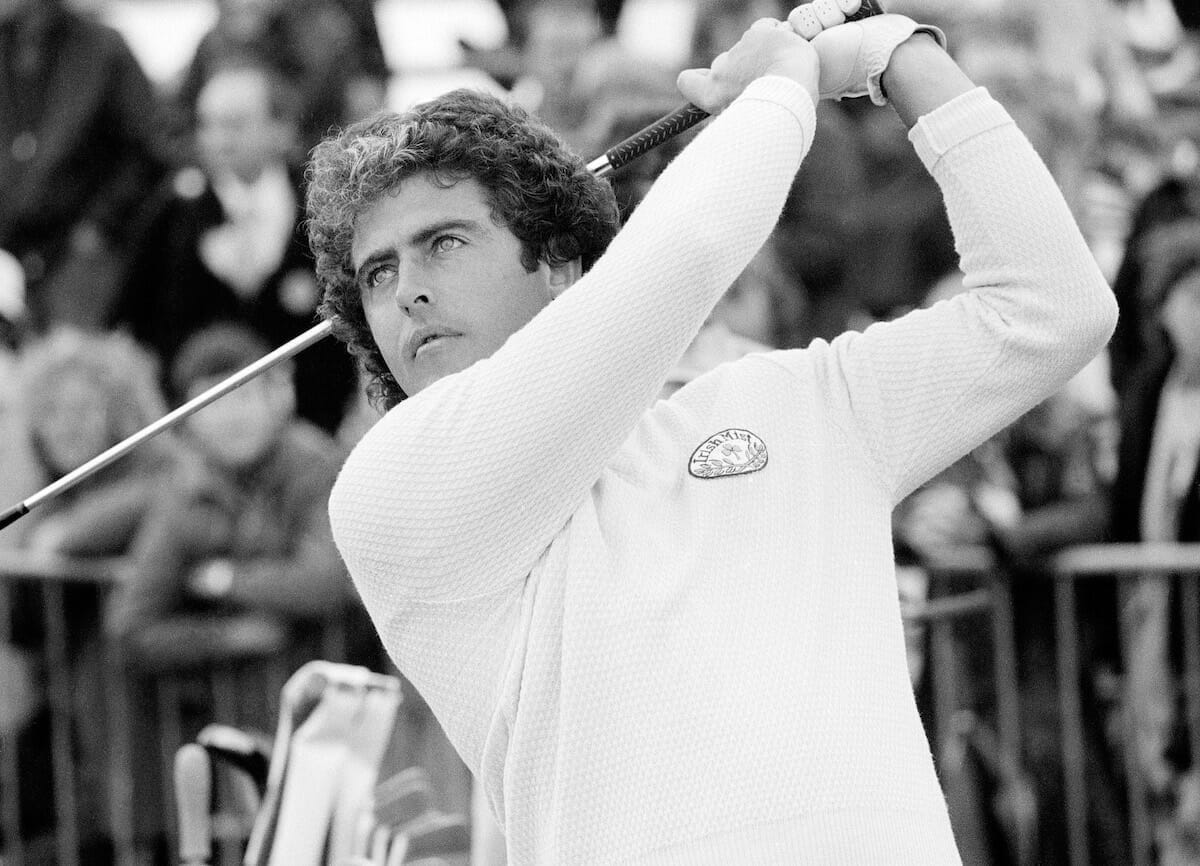Home winners of a country’s national Open championship are a rare breed and occupy a special place in golf history since the European Tour as we know it began in 1972.
Take, for example, our own beloved Dubai Duty Free Irish Open championship. Restored to the calendar in 1975, this national celebration of golf has been staged 46 times in the modern era to date, and only five Irishmen have triumphed on home soil – Christy O’Connor Junior at Woodbrook in 1975; John O’Leary (Portmarnock, 1982); Pádraig Harrington (Adare Manor Hotel & Golf Resort, 2007); Shane Lowry (County Louth, 2009), and Rory McIlroy (The K Club, 2016).
Foreign raiders have stomped all over generations of Irish professionals on home territory for nearly five decades, much to the chagrin of our top golfers and their supporters. Darren Clarke could arguably be considered an exception, as he won the Smurfit European Open in 2001 at The K Club.
Credit to Darren, that was a terrific feat, but in the context of this article, the focus is on the Irish and other national Open championships which have been the bedrock of the pro game on this side of the Atlantic. We’re not talking majors here, such as The Open Championship, or the US Open, albeit that technically the latter is also a “national Open”. We’re staying much closer to home and reflecting on the proud tradition of events such as the Open championships of France (inaugurated in 1906), Belgium, (1910), Germany (1911), Holland (1912), Spain (1912), and Italy (1925)
The first Irish version that was open to professionals took place at Portmarnock in 1927. None of these tournaments could claim an unbroken record in terms of being played annually, not least because of World Wars 1 and 2, but since 1972, as long as they featured on the European Tour schedule, they were coveted titles by the top professionals.
Interesting to note, then, how few ‘home’ winners have their names on the honours’ list. Also interesting to note is how continental titles have been annexed by Irish players who found it so difficult to win in the Emerald Isle. Take the French Open as an example. Just two French players – Jean Francois Remesy (2004 and 2005), and Thomas Levet (2011) gave the home fans a reason to burst into a chorus of ‘La Marsellaise’ since 1972. Remesy and Levet’s feats were matched by our own Philip Walton, the French Open champion of 1990, and Graeme McDowell (2013 & 2014).
Ditto with the Italian Open. Three home winners – Baldovino Dassu in 1976, Massimo Mannelli (1980) and Francesco Molinari (2006, 2016), and three successful Irish raiders: David Feherty (1986), Ronan Rafferty (1989), and Graeme McDowell (2004).
Feherty and McDowell also have more Scottish Open wins than the Jocks. The Northern Irish duo ate the Scots’ proverbial lunch in 1986 and 2008 respectively, compared with their one home champion, Colin Montgomerie, who finally got the job done on behalf of his countrymen in 1999.
All of which begs the question: why was it always it so difficult to land one of these national Open championships? Pádraig Harrington admits it took years to work out an approach to the Irish Open that would give him the best chance of making his dream come true. Harrington and the other leading Irish pros considered the Irish Open their fifth Major and that brought a unique level of stress.
This was Harrington’s response to being asked about the pressure on Irish players compared with non-Irish competitors when he was interviewed on May 16, 2007, the Wednesday of Irish Open week at Adare Manor Hotel & Golf Resort.
“I would suggest (there’s less pressure) because in their own country they don’t have the same media coverage, and same expectation, and same stresses coming into the event,” he said. “The Irish Open is one of the bigger events in the country, so there’s much more pressure I think, expectations involved in this week.
“I’m only putting an answer on it now. If I turn around and win this week or next year, we can say, well, it’s all the same. But I’m trying to find the reason for the fact that it’s been 25 years since John O’Leary won in black-and-white trousers that we have not had an Irish winner.
“If it doesn’t work this year, I’ll try the black and white trousers next year.”
Asked was there too much pressure, he replied: “Yeah, pressure, distractions, expectations, just the fact that people want an Irish winner. It’s not like I or any of my fellow Irish pros are good enough to say we’re going it turn up and have our “A” game that week. There’s still a little bit of hit-and-miss; so if we win two or three times in a year, we’ve had a good year. For that to fall at the Irish Open, it’s like we win a major. We put it up there on a pedestal so there is obviously a little bit more stress, pressure, a little bit more distraction.”
Little did we know then that by the following Sunday evening, Harrington would have broken the Irish Open hoodoo to become the long-awaited successor to 1982 champion John O’Leary. Harrington was thrilled, yes, but relieved as well, a feeling shared by the late, great Seve Ballesteros who is one of just five individual Spaniards to win their home Open since 1972.
Antonio Garrido struck first in the Tour’s debut year; Seve captured the first of three Spanish Opens in 1981; Sergio Garcia emulated his hero’s feat in 2002,. Next up was Alvaro Quiros (2010) and the then 50-year old cigar-smoking, supple-bodied veteran Miguel-Angel Jimenez in 2014.
Seve gave an inkling of the home pressures in 1985 when he had to draw on all his skills for his second national Open success, saying: “For a time I played like a donkey from La Mancha, dropping shots at the 9th and 10th in the final round, but I think I played more like an English thoroughbred over the last few holes.” Incidentally, Ireland’s Eddie Polland (twice), Eamonn Darcy, Pádraig Harrington, and Peter Lawrie joined Seve & Co on the Spanish Open’s roll of honour.
The German Open featured only one native champion, but he was a good ’un – the phenomenal Bernhard Langer. Langer, still a committed competitor at the ripe old age of 63, has won the championship five times – 1981, ’82, ’85, ’96 and ’93, but is another who had to cope with extra demands when playing at home. The 1981 victory was a watershed in the perception of golf by Germans.
Langer described its significance in his 2003 autobiography: “I won my first German Open. No one could ever have thought a German could do that. Oh, yes, we have good football players, great tennis stars, good skiers, but golf? No way! Winning the German Open was very important for me as no German had ever won it in the seventy years of its history (to 1981), and to win in my home country was very pleasing.
“It also put a lot of extra pressure on me, I remember – having so many friends and relatives all wanting me to win. So you have the pressure not just of the tournament, but also not letting your friends down.”
Thomas Levet spoke of the frantic energy pulsing off the home galleries in the last two rounds as he battled to win the French Open in 2011. Then aged 43, the victory could not have been sweeter for the popular Frenchman.
“What is crazy, is that the people, they just go, “Come on, Thomas, allez, allez allez. Just a lot of emotion, just very, very tiring, and it was just great, the atmosphere. I felt like the Tour de France has started, I felt like one of the riders climbing some of the mountain in France with the public all around me shouting my name. It was quite crazy over the last 36 holes, just a great atmosphere,” said Levet.
Francesco Molinari chose the best possible tournament in which to end a drought that had lasted from 2012 until his Italian Open win in 2016. Molinari led by four shots at one stage but was chased home by Danny Willett before finally holing the key putt to win by one from the Englishman.
“It’s been a rollercoaster,” he said. “It’s amazing to see this amount of people out here supporting me. I had the ideal start, I couldn’t start any better. When I birdied 12 I got four shots clear, and thought maybe I could relax a bit and I got punished straight away. Coming in I had nothing left, I was just playing with my soul.”
Shane Lowry, then an amateur, definitely played with soul, heart, and head in 2009. The Clara native caused a national and international sensation by coming through a playoff with England’s Robert Rock for a magnificent victory against all the odds.
And so, to Rory McIlroy who first became aware of the Irish Open in 1999. The Belfast boy was ten years old when the young Spanish conquistador Sergio Garcia, aged 19, thrilled the galleries with a win in Druids Glen. Watching Garcia’s boyish enthusiasm and sparkling golf, kindled an ambition within the young McIlroy to someday be on that winner’s podium.
Funny thing about Rory: he could perform at the highest level in major championships as he proved by knocking off four of them by age 25, but the Irish Open eluded him until, finally, he got his hands on the trophy at The K Club in 2016. Happily, the reality lived up to the dream he had nurtured since boyhood. McIlroy’s achievement was enhanced by his Foundation partnering with Dubai Duty Free and the European Tour to breathe new life into the championship and raise around €1 million for charity that week.
No wonder tears welled up in Rory’s eyes on the 18th hole of The K Club’s Ryder Cup course that memorable Sunday evening: “To win The Irish Open, to win your national Open, you don’t get many opportunities to do it. I knew I needed to take this chance, and I’m just glad I came up with the right shot at the right time. I don’t usually get emotional about golf or about wins, but this one, it means just a little bit more, because it’s not just for myself. It’s for a lot of other people. Yeah, it’s a day I’ll not forget for a while,” he said.
Four years later, and thankfully with the 2020 version of the Dubai Duty Free Irish Open having been played at Galgorm Castle despite the Covid-19 disruptions, the Irish challengers have been edged out by a Spaniard, Jon Rahm (2017 and 2019); a Scot, Russell Knox in 2018, and recently-crowned champion John Catlin of the USA
Time to press the panic button? The Irish Open has yielded just five Irish winners in 46 stagings between 1975-2020 inclusive, so that’s an average of just over nine years per home victory. On that basis, an Irish player is due to come good in 2025. Get your bets on now!



























Leave a comment